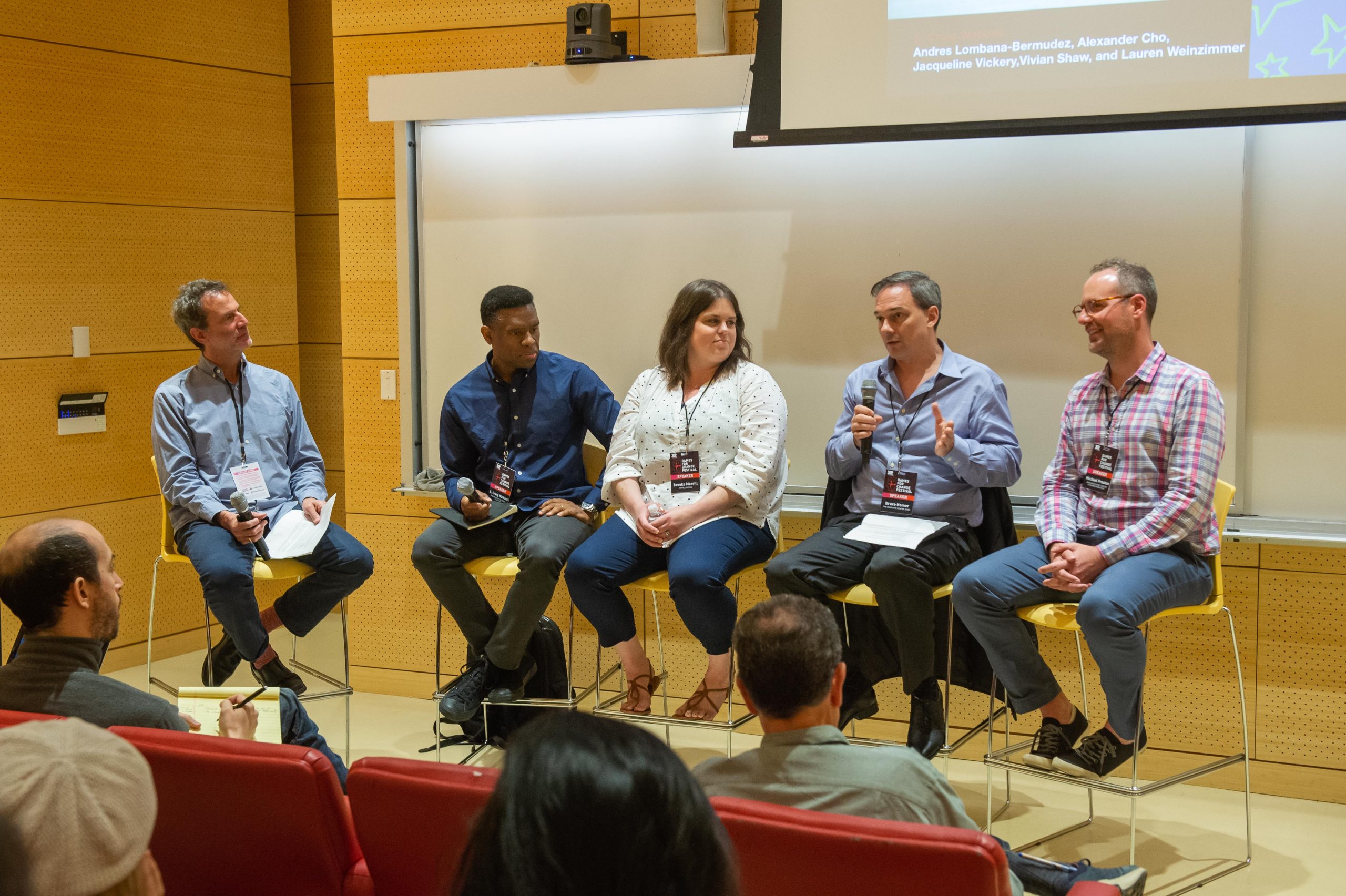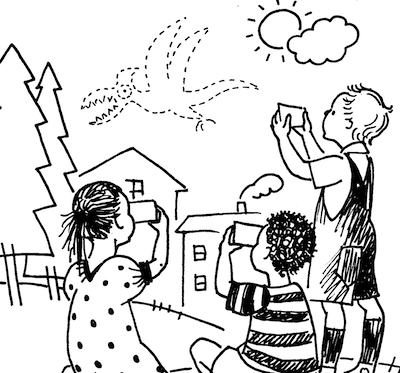Before the Future of Childhood: Immersive Media and Child Development salon took place in November 2018, we invited experts to share their visions about the ways VR and AR might impact childhood 10 years from now. Chris Chin, Executive Director of VR Content at HTC Vive, believes VR has the potential to play a positive role in building pathways for more equitable learning opportunities.
From Ready Player One to The Matrix, authors, futurists, and Hollywood have painted a picture of how VR could evolve in our lives—a future VR-driven world predicated on the usual suspects that we already encounter today: corporate greed, technology, and ultimately control of free will. In contrast, I see a decidedly brighter vision of the future of VR, one in which education, equity, and empathy play an increasingly large role in shaping our future and that of our children.

For reference, we need only look at the rise of mobile to understand how quickly technology can evolve to shape our lives. The early days of smartphones yielded basic calendaring, to-do lists, and web access, all revolutionary at the time. The most popular app in 2007, the iPhone’s first year, was a koi fish pond mini-game. Today, phones and tablets are ubiquitous and almost essential to daily life. In education, textbooks, assignments, and multimedia lessons are increasingly distributed and consumed through these devices, which have become tremendous resources for learning and information.
While VR has been around for decades, the first consumer-level high-end VR devices that launched in 2016 are analogous to the initial cellular phone “bricks” that predate the state-of-the-art devices we have today. Today’s VR, powered by a PC, is nonetheless amazing. With roomscale VR, anyone with an HTC Vive Pro can walk around and explore a 33’x33’ virtual space in HD resolution without being tethered to the PC, already a significant improvement from two-and-a-half years ago. Hundreds of educational VR experiences exist where students can learn about the human heart in full immersive 3D, navigate a Lunar lander 50 years after the first moon landing, or discover the secrets of the ancient pyramids.
While mobile has afforded tremendous change, VR has the capacity to go even further in impacting education and as a tool for equity. We know that experiential learning in VR can decrease a student’s cognitive load and help improve learning outcomes. We know from Dale’s Cone of Experience that learning by doing is much more effective for memory retention than reading, watching, or listening. VR’s ability to simulate any environment and have the student learn by doing effectively levels the playing field for all learners, whether they be visual, auditory, reading/writing, or kinesthetic.
This bodes well for the future as the field of artificial intelligence rapidly emerges. When learners can process a lesson in the format in which they learn best, and that’s coupled with adaptive learning AI and built-in assessment feedback loops, truly personalized learning can be achieved and education parity starts to become a reality.
Thus, the potential for equity in education becomes closer to reality in 10 years, along with increased development of empathy in our students towards the plight of others. Already, VR is helping students break stigmas around race and homelessness. In the future, we will see VR foster empathy for the diversity of circumstances we individually experience, including gender, background, ethnicity, religion, or physical or cognitive disability.
Finally, from a hardware standpoint, we will see device form factors become smaller, lighter, and more “accessorized.” With the advent of 5G mobile networks, we will “cut the cord” entirely and our mobile VR devices will take on the form of visors/glasses that can be comfortably worn all the time, with pass-thru ability for an augmented/mixed reality experience. Eye tracking and new brain-computing interface (BCI) sensors will form the basis for new ways of interaction and control with our virtual environments. And haptics embedded in our clothes and gloves will provide physical feedback and a level of immersion far more engrossing and realistic than ever before.
I look forward to this future, with better ways of learning for our students, more opportunities for equity in education, and a pathway towards a more empathetic world.

Chris Chin is Executive Director of VR Content at HTC Vive. He has 20+ years leading product, content, and business operations in gaming, mobile, and ed tech. He is passionate about the potential of VR in education and currently heads up education content and strategic initiatives at HTC Vive. @chrisforevr




